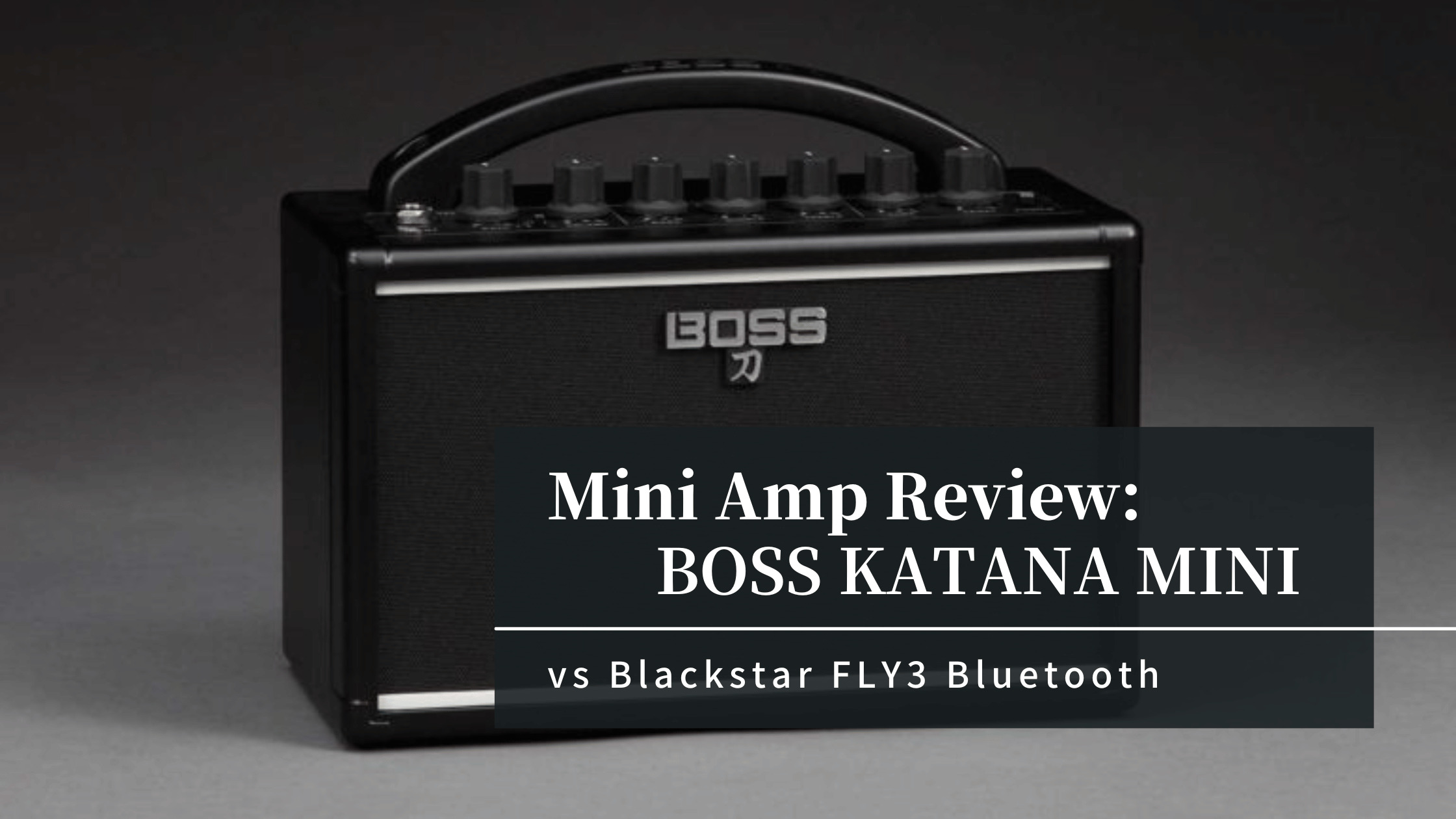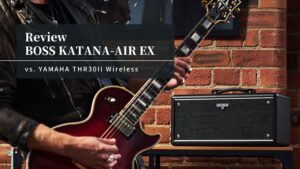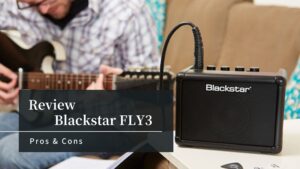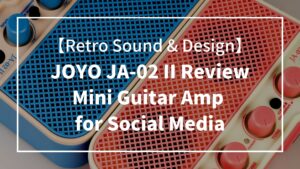The BOSS KATANA-MINI is a versatile mini amp suitable for desktop practice and outdoor use, offering a range from clean to high gain. Weighing only 1.2kg, it's portable and boasts a 7W output, 3-channel analog circuit design, and a 3-band EQ. While it provides a warm sound, some users might desire more clarity. When compared to the Blackstar FLY3 Bluetooth, the KATANA-MINI excels in output and EQ options, though it lacks Bluetooth functionality.
- Desktop Practice mini amp
- Portable for outdoor use
- From clean to high gain
This is a review of the standard mini amp, KATANA-MINI, recommended for those looking for an amp that satisfies all of the above.
Pros of KATANA MINI
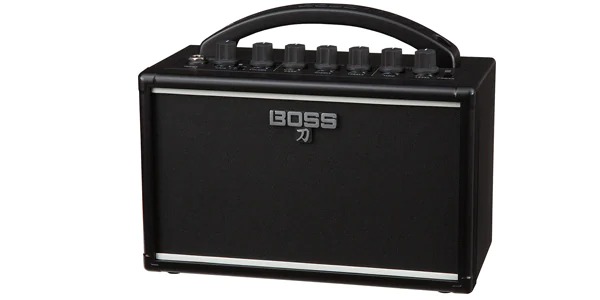
You can bring it everywhere: Small and Light
The weight is only 1.2kg. Furthermore, its dimensions are 230 mm x 116 mm x 181 mm. It’s quite lightweight and compact for an amp. Although it might look a bit cheap, its plastic body contributes to its lightness. It also operates on six AA batteries. The manufacturer claims a continuous battery life of about 7 hours with alkaline batteries, which is decent. It’s convenient for outdoor use. While a separate 9V adapter can also power it, many prefer to use rechargeable batteries due to its portability.
You can use it everywhere: Loud Volume
Among mini amps, it boasts a top-class output of 7W, ensuring a solid volume. Conversely, in rental apartments, turning up the volume might disturb the neighbors. This feature also makes it reliable for outdoor use, as most small amps tend to have a low volume.
Natural Tone: 3-channel Analog Circuit Design
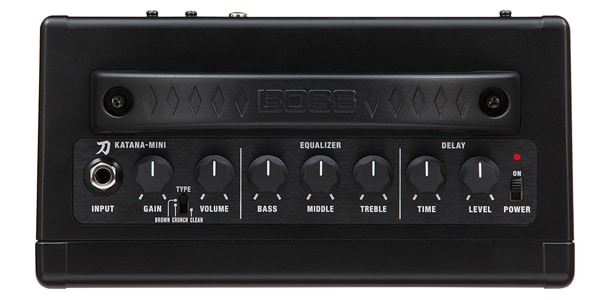
The sound quality is also among the best for mini amps. Instead of digital modeling, it uses an analog distortion circuit, providing a natural sound for clean, crunch, and distortion modes. The clean mode offers a warm, natural sound, not the typical sharp clean sound found in practice transistor amps. The crunch mode is ideal for rhythm and solo, distorting enough for rock. The brown mode is a high-gain channel suitable for hard rock/metal. The gain is high, and even with a low guitar output, it distorts significantly around the noon position.
3-band EQ for all genres
While most mini amps come with a single-tone control, this device is equipped with a three-band EQ: bass, middle, and treble. This allows for sound adjustments that are difficult with a single tone, catering to several genres. It also features a delay, which is pleasant when set to a short time, giving a reverb-like expansive sound.
Con: Lack of presence
The main drawback is the lack of presence. While the analog circuit provides a warm sound character, some might desire more clarity and sharpness, especially in clean and crunch modes. This aspect might be challenging to achieve even with the 3-band EQ.
Blackstar FLY3 Bluetooth Comparison
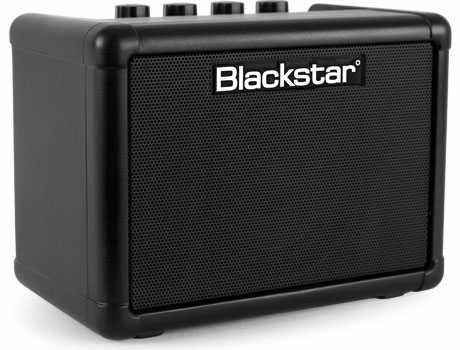
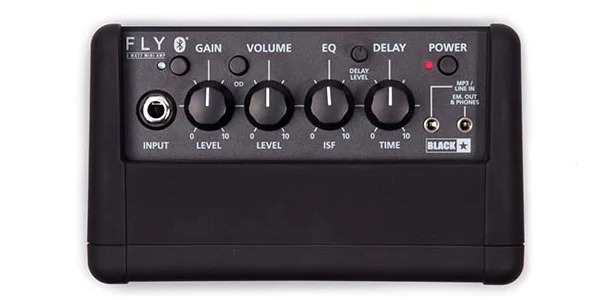
The most comparable model would be the Blackstar FLY3 Bluetooth. Here’s a brief comparison:
| Feature | KATANA MINI | FLY3 |
|---|---|---|
| Market Price | $99.99 | $109.99 |
| Output | 7W | 3W |
| Channels | Clean, Crunch, Brown | Clean, OverDrive |
| EQ | Bass, Middle, Treble | ISF |
| Headphone Jack | Yes (Stereo Mini Plug) | Yes (Stereo Mini Plug) |
| AUX IN | Yes (Stereo Mini Plug) | Yes (Stereo Mini Plug) |
| Bluetooth | No | Yes |
| Size | 230mm x 116mm x 181mm | 170mm x 126mm x 102mm |
| Weight | 1.2kg | 0.9kg |
In terms of output, channel variety, and EQ, the BOSS KATANA MINI takes the lead. Especially for high gain suitable for metal, KATANA MINI is superior. On the other hand, the FLY3 Bluetooth’s advantages are its lighter weight, smaller size, and, as the name suggests, Bluetooth audio playback. With the KATANA MINI, you need a wired connection to a player. However, you can try connecting a Bluetooth transmitter for wireless connectivity.
Sound Comparison
The top video has better sound quality, but the bottom one feels closer to the actual sound in terms of texture.

